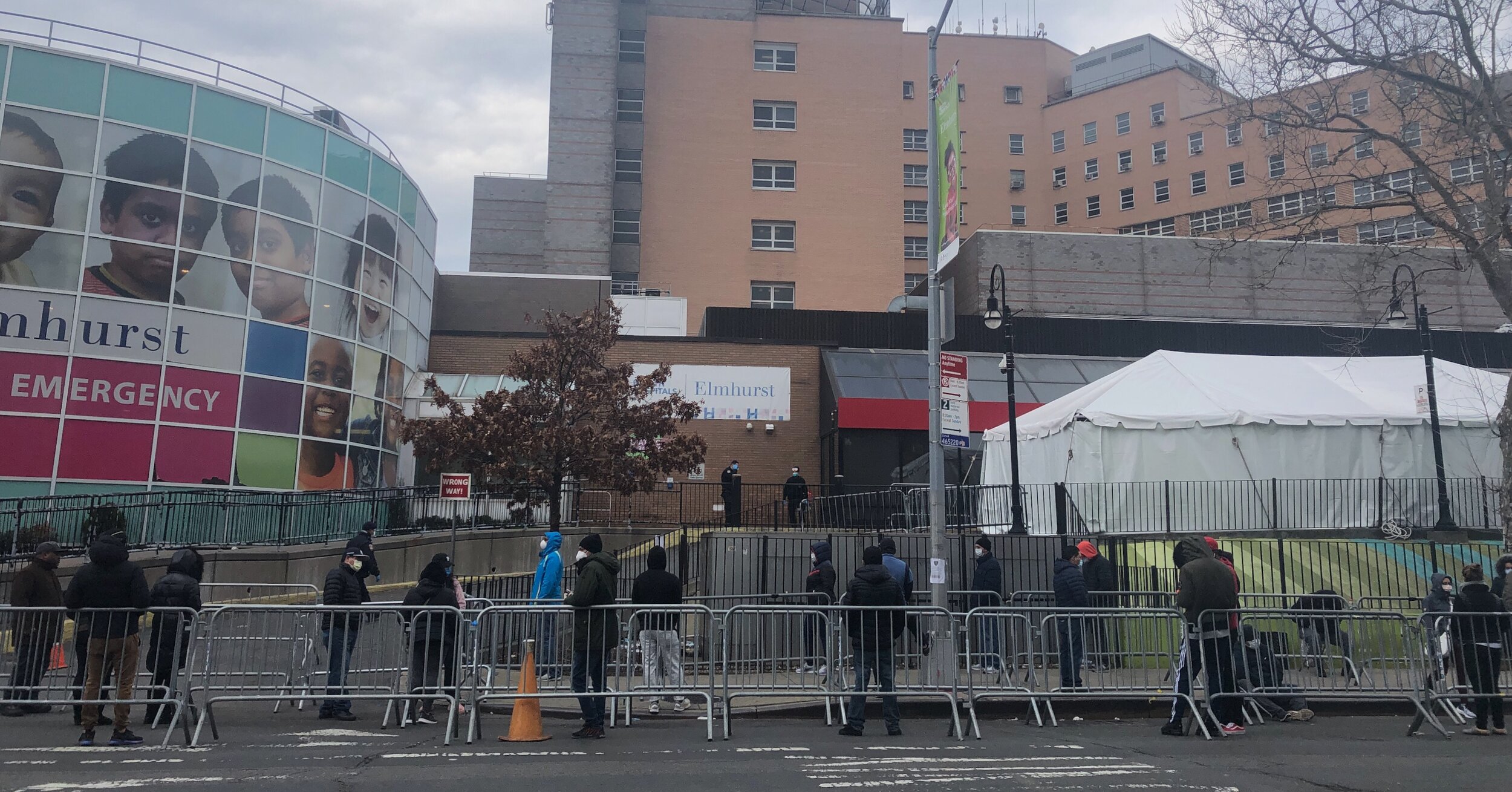The scene outside Elmhurst Hospital, epicenter of the COVID-19 crisis
/Since the city erected a testing tent outside Elmhurst Hospital, the medical center has been inundated with cases. At least 13 people died in the span of 24 hours Tuesday and Wednesday. Eagle photos by Rachel Vick
By Rachel Vick
By 9:30 a.m. on Friday, dozens of people were already standing online, six feet apart, outside Elmhurst Hospital, a city-run hospital that has become the epicenter of the COVID-19 outbreak in Queens. The line snaked down the block and into the roadway, as NYPD officers kept watch.
The visitors were waiting to be tested inside a large tent set up outside the hospital last week. Some said they had been there for hours.
Over the past week, the public hospital has emerged as a symbol of the current crisis — the most overburdened medical center in the jurisdiction with more confirmed cases than anywhere else in the country.
“Elmhurst Hospital in Queens is right now the epicenter within the epicenter, dealing with an extraordinary surge of cases,” said Mayor Bill de Blasio Thursday.
The city sent 56 new staff members and 40 new ventilators to help COVID-19 patients in critical condition. The hospital — one of nine serving Queens’ 2.3 million residents — has been operating at 125 percent capacity as patients sickened by the novel coronavirus seek treatment, Patch reported.
Patients Friday queued up along metal railings as news crews filmed their slow trudge toward the front of the line. One guy in a trench coat and rubber boots lingered near the railing, seeming to crave attention from the TV cameras.
Several police cars parked on both ends of the line, their vehicles flashing the message “Do your part stay 6 feet apart” from displays on their back windows.
The officer posted at the front of the line told the Eagle it would take people on line about two hours before they could enter the testing tent. He let in 10 patients at a time. A man near the back of the line said he had been waiting for an hour.
Some came prepared for a wait, resting uneasily on travel stools, while others shook out tired legs or sat on the curb. Many wore masks, but others did not.
One woman waited on line with a friend, who stood on the barrier. Other came together and did not have to heed the six-foot social distancing guideline.
One group that had entered together waited across the street as one by one their party emerged from the test, carrying papers from the hospital. They left to await their test results.




